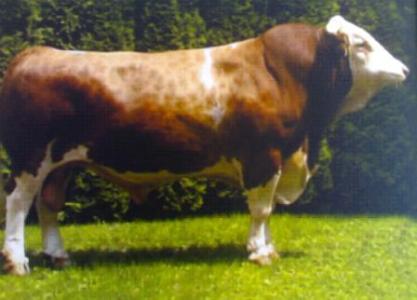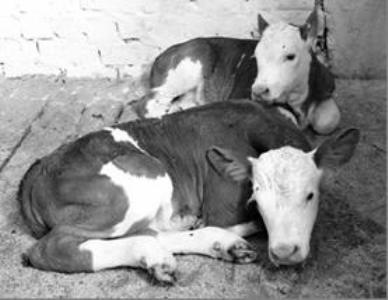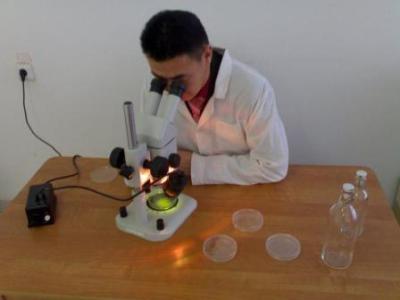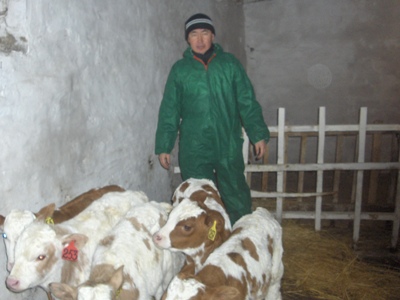History
Kazakh-German Embryo Transfer Research Center was established in September 2011. The center is equipped with modern laboratory equipment for cattle embryo transfer imported from Germany (Bavaria, Neustadt a.d.Aisch). The center has one chief scientist, one senior researcher, one specialist of the highest level qualification and one technician.
Purpose and field of work
The Center works in the field of biotechnology of cells. The main goal of the scientific and research work of the Center is to develop a method of obtaining, evaluation and transplantation of embryos from cows bred in the North-East Kazakhstan.
To achieve this goal, we have defined the following tasks:
- to determine the best dosage of the drug to induce superovulation using different doses of the "Pluset" hormone for cows and heifers;
- to determine the number and quality of embryos obtained from superovulated cows of Simmental and Kazakh white breeds by means of a comparative analysis;
- embryos from cows and heifers, sorted by morphological indicators and compliance with the stages of development;
- to determine the level of development of embryos transplanted to the recipients by means of the transcervical method;
- to compare the ovaries of superovulated cows and heifers using an ultrasonic device to the result of rectal examination;
- getting transplant calves by means of embryo transfer.
Scientific Works
Under the program of the Ministry of Education and Science of the Republic of Kazakhstan devoted to the development of fundamental and applied sciences, the center hosts the project entitled Animal Biotechnology (Animal Embryo Transfer), as well as contractual works. Our employees often work jointly with the German side at Neustadt a.d. Aisch.
In 2011, researchers of the center participated in six international and national conferences with reports. 19 papers were published in the materials of conferences and journals of leading universities.
The center published 2 textbooks in Kazakh, 2 study guides in Russian and 1 monograph.
The research staff developed three recommendations for production on the basis of their findings and experience.
7 students of the Biology and Zootechnics specialties defended their graduation works under the supervision of the Center researchers.
8 students participated in 2 Prometheus projects under the supervision of the Center researchers.
Other works
The Center won the competition for the subproject entitled "Preparing Masters for the Sustainable Development of Cattle-Breading in North Asian Countries" under the Tempus project. Under this project, 10 master degree students from Kazakhstan studied at the National University of Mongolia under the supervision of professors from France, Belgium and Italy in English under the EU program and received international Master of Science degree.
An agreement regarding cattle embryos transferring was concluded with the tribal association of Bavaria Neustadt a.d. Aisch.
A paid training for the artificial breeding technician was held. The training was attended by 30 specialists from the private and collective farms of the region, the participants received certificates of cow inseminators.
Awards
M. Ayatkhanuly was awarded the badge "For Contribution to the Development of Science in the Republic of Kazakhstan".
Received a diploma "Best Innovation Project" from the Department of Business and Industry of the region.
Scientific and practical work
The results of the researches are now introduced in dairy cattle breeding (Experimental Farm LLP in the Irtysh area and Lugansk LLP in the Pavlodar area of the Pavlodar region). As a result of embryo transfer, 10 graft-calves were born. In addition, this year in July, transferred embryos were obtained from 5 cows-recipients.
Work on the topic "The Introduction of Artificial Insemination in “Mazhit” Farm” is carried out in the "Mazhit" farm of the Bayanaul area of the Pavlodar region on a contract basis (No. 19 SO).
Performers: Senior Researcher Seyteuov T.K. and Specialist of the Highest Qualification Ateykhan Bolatbek.
According to the agreement, artificial insemination of white-headed Kazakh breed of cattle was carried out in Mazhit farm. The novelty of this work consists in the use of artificial insemination for meat breed cows in Pavlodar region. Most of the cows and heifers of white-headed Kazakh breed are inseminated by bulls naturally.
In the "Mazhit" farm, artificial insemination was conducted using new technology of insemination. First, the heat synchronization of a group of animals was carried out for sustainable meat production. The heat synchronization was achieved with the use of hormones: estrofan and magestrofan. When the oestrus takes place after hormone treatment, the females are inseminated with sperm in payets, prepared by the Taurus company using the U.S. technology.
With the heat synchronization, the result shown by Magestrofan was better than the result of Estrofan. The difference between them was 20-25 percent. So, we recommend the double use of Magestrofan with the interval of 11-12 days, at the dosage of 2 ml. per cow. The animals are inseminated at fixed time periods (in 48-72 hours after the preparation injection). It was determined that with the double injection of the preparation and insemination at fixed time periods, the insemination takes place for 53 percent of heifers and 42 percent of cows. The results of the control groups are 55 and 45 percent respectively.
Work on the topic entitled “Artificial Insemination and Cattle Breeding in the “Agayin” Farm” carried out in the "Agayin" farm of the Bayanaul area of the Pavlodar region on a contract basis (No. 10 SO).
Performer: Senior Researcher Seyteuov T.K.
Artificial insemination of cattle was carried out in the Agayin farm using a new insemination technology. When the oestrus takes place, the females are inseminated with sperm in payets, prepared by Asyl Tulik JSC using a French technology.
148 mature cows and first-calf heifers underwent artificial insemination. They were inseminated using the recto cervical insemination method. This method consists in manual injection of the tool in the front of the cervix through the rectum. Deep-frozen semen of a Simmental bull was used in payets (straws).
Total result of insemination is 91%. However, the analysis of artificial insemination showed that the result of fertilization was different in the groups of mature cows and first-calf heifers.
After the first insemination, 71 percent of first-calf heifers and 57 percent of mature cows were fertilized. So, fertilization of first-calf heifers is 16% higher. Besides, after the second insemination, all first-calf heifers were springing. The term of insemination of mature cows was longer, and they had to be inseminated at least 3 times.
|
|
|
|
Documentation is the basic material for breeding animals. It is used in the selection, breeding and bonitation of cattle. Therefore, new documentation was written for 430 head of cattle bred on the farm, according to the requirements for breeding cattle. Additional pedigree records materials were prepared in the form of the following logs:
- calving log
- insemination log
- young-stock breeding log
- test milking log
- servicing bull use log, etc.
All the tasks of the performer were fulfilled, the report of completion was signed.
Independent exploratory research entitled “Quantitative and Qualitative Research of Cow Embryos Obtained by Different Methods of Superovulation” is carried out in the Lugansk rural settlement of the Pavlodar area of the Pavlodar region.
Supervisor: Doctor of Biological Science, Professor M. Ayatkhanuly.
Performer: Senior Researcher Seyteuov T.K.
Preliminary studies have shown the following results:
- A rational dose of Pluset hormone and PGF to induce superovulation in cows and heifers was developed.
The maximum effect is achieved with Pluset hormone treatment on the 11th and 12th days of the sexual cycle. This hormone is injected twice a day in lowering doses. 8 mature cow injections require 9 ml, while heifers need only 7 ml. On the fourth day after the start of the superovulation treatment, PGF is injected, injection dosage is 4 ml.
- The quantity and quality of embryos obtained from cows of Simmental breed and red steppe breed in dairy farms of Pavlodar region were checked.
Applying the superovulation scheme, the average result is 6.1 embryos from Simmental cows and 5.3 embryos from cows of red-steppe species. Embryos suitable for transplantation are 4.8 and 4.1 respectively.
- The quality of embryos was determined by morphological indicators to determine suitability for transplantation.
Morphological study showed that 68% of all of embryos are at the morula stage, 21% are at the blastocyst stage of different development level. There are also unfertilized ovicells which make up 11%.
|
|
|
Obtaining transplant calves by means of embryo transfer.
|
|
Human resource capacity
The center has 1 Doctor of Science, Professor, 1 Ph.D. in Agriculture, 1 specialist of the highest level of qualification and 1 technician.











